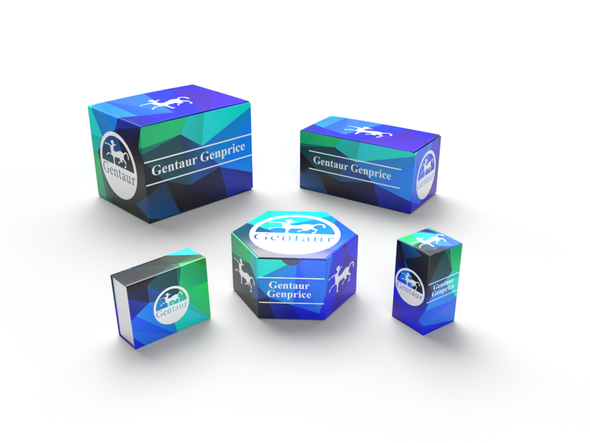749
Human CD22/SIGLEC-2 protein, His tag (Animal-Free) | PRP2026
- SKU:
- 749-PRP2026
- Availability:
- Usually ships in 5 working days
Description
Human CD22/SIGLEC-2 protein, His tag (Animal-Free) | PRP2026 | Gentaur UK, US & Europe Distribution
Product Category: Cytology
Application: Cytokines
Product Type: Cytokines (Animal-Free)
Sequence: Amino acid sequence derived from human CD22 (P20273-1) (Met1-Arg687) was expressed with a 6 His tag at the C-terminus.
Activity: N/A
protein Lenght: The recombinant humanCD22/SIGLEC-2 protein consists of 674 amino acids and predicts a molecular mass of 77.0 KD. It migrates as an approximately 90-116 KD band in SDS-PAGE under reducing conditions due to glycosylation.
Preparation: HEK293 Cells
Purity: >95% as determined by SDS-PAGE.
Formulation: Lyophilized from sterile PBS, pH 7.4.
Kit Component: N/A
Features & Benefits : Endotoxin: < 1.0 EU per µg of the protein as determined by the LAL method.
Molecular Weight: 77 KD
Usage Note: Always centrifuge tubes before opening. It is recommended to reconstitute the lyophilized Human CD22/SIGLEC-2 protein using the buffer we provided not less than 100 µg/mL, which can then be further diluted to other aqueous solutions.
Storage Conditions: Lyophilized Human CD22/SIGLEC-2 protein, His tag (Animal-Free) should be stored desiccated below -20°C. Upon reconstitution, the protein should be stored at 4°C between 2-7 days and for future use below -20°C. For long term storage it is recommended to add a carrier protein (0.102% HSA or BSA) . Please prevent freeze-thaw cycles.
Shipping: The product is shipped at ambient temperature.
Background: B-cell receptor CD22 is also known as Sialic acid-binding Ig-like lectin 2 (Siglec-2), B-lymphocyte cell adhesion molecule (BL-CAM), T-cell surface antigen Leu-14, which belongs to the immunoglobulin superfamily and SIGLEC (sialic acid binding Ig-like lectin) family. The phenotype of CD22-deficient mice suggests that CD22 is primarily involved in the generation of mature B cells within the bone marrow, blood, and marginal zones of lymphoid tissues. CD22 recruits the tyrosine phosphatase Src homology 2 domain-containing phosphatase 1 (SHP-1) to immunoreceptor tyrosine-based inhibitory motifs (ITIMs) and inhibits B-cell receptor (BCR) -induced Ca2+ signaling on normal B cells. CD22 interacts specifically with ligands carrying α2-6-linked sialic acids. As an inhibitory coreceptor of the B-cell receptor (BCR), CD22 plays a critical role in establishing signalling thresholds for B-cell activation. Like other coreceptors, the ability of CD22 to modulate B-cell signalling is critically dependent upon its proximity to the BCR, and this in turn is governed by the binding of its extracellular domain to α2, 6-linked sialic acid ligands. However, genetic studies in mice reveal that some CD22 functions are regulated by ligand binding, whereas other functions are ligand-independent and may only require expression of an intact CD22 cytoplasmic domain at the B-cell surface. CD19 regulates CD22 phosphorylation by augmenting Lyn kinase activity, while CD22 inhibits CD19 phosphorylation via SHP-1.
Alternative Names: B-cell receptor CD22; BL-CAM; B-lymphocyte cell adhesion molecule; CD22 antigenMGC130020; CD22 molecule; CD22; sialic acid binding Ig-like lectin 2; Siglec-2; SIGLEC2FLJ22814; T-cell surface antigen Leu-14
Search Names: B-cell receptor CD22; BL-CAM; B-lymphocyte cell adhesion molecule; CD22 antigenMGC130020; CD22 molecule; CD22; sialic acid binding Ig-like lectin 2; Siglec-2; SIGLEC2FLJ22814; T-cell surface antigen Leu-14
Tag: CD22/SIGLEC-2










